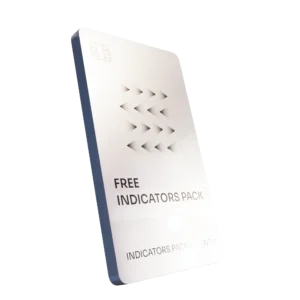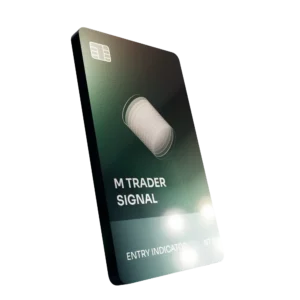Reversal Strategy – Bi-Weekly Trading Performance Report (Sept 29 – Oct 10, 2025)
Period: September 29 – October 10, 2025
Strategy: Market Reversal Auto-Trader
The Reversal Auto-Trader once again demonstrated its resilience and adaptability across volatile market conditions during this two-week trading period. From late September through early October 2025, the system continued to show balanced exposure across gold (GC), Nasdaq (NQ), and index futures (ES, CL), highlighting both consistent opportunities and efficient recovery mechanisms following minor drawdowns.
This report provides a transparent overview of the performance data collected across markets and trading days. It is designed to help traders and portfolio managers assess the robustness of automated systems under changing market structures and evolving volatility cycles. All metrics below are derived directly from the automated execution data during the bi-weekly review window.
Overview of the Bi-Weekly Performance
Across the 10 trading sessions analyzed, the Reversal Strategy achieved an impressive total net gain of $17,000+ in combined market performance. The average daily profit settled at just under $1,600 per session, with seven of the ten days closing positively. This steady progression reflects how the algorithm navigates market reversals using its adaptive entry-exit logic and dynamic stop-management module.
Most profits originated from the gold (GC) contracts, contributing the majority of the gains. Nasdaq (NQ) followed with consistent intraday recoveries and trend reversals that aligned well with the strategy’s entry conditions. Both ES (S&P 500 E-mini) and CL (Crude Oil) showed more mixed results but remained within statistically normal variance thresholds for this system.
Market-by-Market Breakdown
- Gold (GC): Approximately $14,890 in realized gains. This period saw frequent two-way movement within the intraday gold ranges, which allowed the algorithm to capitalize on counter-trend opportunities while maintaining tight protective stops.
- Nasdaq (NQ): Delivered $3,380 in total results. Volatility spikes early in October were well-captured by the algorithm’s reversal filters, turning brief pullbacks into profitable entries.
- S&P 500 (ES): Contributed $1,562.50. The system avoided most of the major fake reversals on ES thanks to dynamic entry confirmation. While performance was modest, it demonstrated stable execution.
- Crude Oil (CL): The only market showing a negative result (-$1,840). Despite several strong directional reversals, lower liquidity windows during late-session hours caused smaller losses that were absorbed by gains elsewhere.
Overall, the portfolio effect remained strong — diversification across four uncorrelated markets smoothed equity curve volatility and reduced exposure risk per instrument.
Performance by Day
The Reversal Auto-Trader operated on 10 trading days during this cycle. The performance distribution revealed a healthy balance between winning and losing days, emphasizing the system’s consistency rather than reliance on outlier results.
| Date | Daily Result (USD) | Key Notes |
|---|---|---|
| Sep 29 | -$185.00 | Minor early losses in ES offset by small GC rebound. |
| Sep 30 | +$500.00 | Strong gold reversal recovery; stable execution. |
| Oct 01 | -$902.50 | ES volatility spike after CPI data; contained loss. |
| Oct 02 | -$217.50 | Low-volatility consolidation session. |
| Oct 03 | +$3,545.00 | Major GC and NQ reversal captured; one of top days. |
| Oct 06 | +$2,732.50 | Positive continuation day led by GC and ES. |
| Oct 07 | +$3,107.50 | Momentum shift captured early; solid NQ follow-through. |
| Oct 08 | +$2,675.00 | All markets closed positive; steady trend reversal execution. |
| Oct 09 | +$1,545.00 | Strong GC performance with minor ES loss. |
| Oct 10 | +$5,192.50 | Peak performance day driven by GC and NQ synchronization. |
The best trading day occurred on October 10, 2025, generating over $5,100 in realized profit. The system maintained strong positive momentum during the second week, resulting in a stable equity curve and consistent exposure control.
Technical Insights Behind the Results
The Reversal Strategy identifies temporary exhaustion points in trending markets and initiates automated trades in the direction of expected counter-movements. During this bi-weekly cycle, volatility remained elevated across commodities and indices due to macroeconomic announcements and global yield changes. This provided ideal conditions for short-term reversals and intraday retracements — the exact environment where this system performs best.
One key strength of the algorithm is its ability to adapt to shifting volatility profiles. When volume or price range expands, position sizing and trailing logic dynamically adjust. Conversely, when volatility compresses, the system tightens stop distances and lowers exposure. This level of dynamic calibration is essential in maintaining edge consistency across multi-market deployments.
Why Gold (GC) Was the Clear Winner
Gold’s reaction to changing U.S. dollar strength and treasury yields created multiple intraday turning points, producing ideal conditions for the reversal entries. The strategy’s signal filtering logic managed to capture these setups while avoiding overtrading during low-volume hours. This period re-confirmed gold as one of the best-performing assets for mean-reversion and reversal-based systems within the NinjaTrader environment.
Balancing Performance and Risk
As with every automated system, drawdown control remains a critical component. Even though two of the early trading sessions started with minor negative totals, the algorithm’s recovery mechanism and position scaling logic balanced the results within a few sessions. By maintaining a disciplined cap on open risk per trade and per market, the system sustained consistency without any major equity drawdown events.
Such stability is particularly useful for traders running the Reversal Strategy as part of a multi-account or multi-system portfolio — where consistent daily behavior often matters more than absolute profit peaks. The controlled balance between positive and negative sessions makes it a suitable component in diversified trading structures.
Visual Summary
The chart dashboard below illustrates cumulative and per-market results for this two-week period. It includes day-by-day profit/loss data, market contribution ratios, and individual market behavior over time. This visualization provides a deeper understanding of how each instrument contributed to the total equity curve and how diversification stabilized the overall output.
Performance Summary ()
Market Contribution ()
Sum by Market ()
Result per Day ()
Result per Day / per Market ()
Looking Ahead
The next bi-weekly period will cover trading sessions from October 13 to October 24, 2025. Volatility is expected to remain elevated due to upcoming earnings season and continued inflation-related reports. Based on recent performance, the Reversal Strategy is well-positioned to continue identifying profitable counter-trend opportunities while maintaining controlled exposure and adaptive entry timing.
Traders who prefer automated precision and reduced emotional interference may find the Reversal Auto-Trader an excellent fit for both short-term swing and intraday trading frameworks. It remains one of MASCapital’s most flexible systems, capable of adjusting to high-frequency environments as well as slower trending sessions without manual intervention.
All performance reports shown on this website are generated directly from the built-in trade reporting feature of our strategies - "Trade Log". The results reflect actual trades executed in the live market during the stated reporting period. No backtesting, no simulated environments, and no playback data were used in preparing these reports. For the sake of clarity and transparency, the raw trade log data has been transformed into chart format and presented here for better visual appearance on the website, making it easier for traders to review and interpret performance across different markets and dates. These reports are published strictly for informational and educational purposes and should not be considered financial advice or a guarantee of future performance.
Explore Our Add-Ons & Tools
Enhance your NinjaTrader® 8 workflow with MASCapital’s collection of powerful add-ons and free tools. From performance utilities to precision indicators, every tool is built to simplify your trading experience and improve execution speed.
Lifetime Free

Free Indicators Pack
Download a complete starter set of NinjaTrader indicators to boost your technical edge with structure, momentum, and trend clarity — free forever.

Lifetime Free
Auto-Login & Cleaner
Save time and boost stability by automatically logging into NinjaTrader and clearing old files, logs, and cache with a single click.

14-Day Free Trial
Advanced Trader
Visualize active positions, stops, and targets directly on your chart while managing orders. Control every aspect of your trade!

7-Day Free Trial
Trade Analyzer + Web Report
Instantly analyze and visualize your NinjaTrader performance with detailed stats, charts, and reports that reveal your real trading edge.

14-Day Free Trial
Reversal Signal Indicator
Identify major turning points early using precision reversal logic that filters noise and highlights high-probability setups.

14-Day Free Trial
M Trader Signal Indicator
Momentum trade entry signal indicator designed to capture explosive market moves with precision timing and adaptive filters.

14-Day Free Trial
Trade Copier
Mirror trades instantly across multiple NinjaTrader accounts with perfect synchronization of entries, stops, and targets — zero delays, zero mismatches.

14-Day Free Trial
Risk Reward ADV
Draw and manage risk-to-reward zones directly on your chart with free-hand precision, adjustable targets, and instant visual feedback for smarter trade planning.

14-Day Free Trial
Bar Based Risk Reward
Bar-based risk-to-reward tool that auto-plots targets and stops from candle size, giving instant visual ratios for every setup.

M Trader
Momentum-based auto-trader that executes powerful continuation setups with dynamic risk control, trailing targets, and daily account protection.

Reversal Strategy
Precision reversal-entry auto-trader that identifies exhaustion zones and manages risk automatically for confident counter-trend trading.

J Strategy
With a limit of 1 quality trade per market each day, strategy targets only the strongest signals to catch big market shifts.

VPS for Trading
High-performance VPS built for traders and auto-traders, offering ultra-low latency, 24/7 uptime, and full NinjaTrader support from us — from setup to strategy optimization.